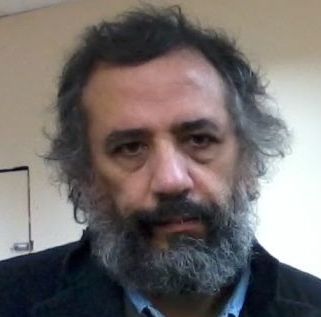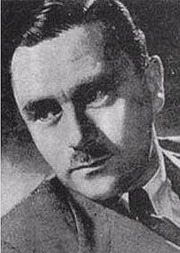

 By VennerRoad, 21st Nov 2014
By VennerRoad, 21st Nov 2014
A profile of two notorious serial killers who were both hanged for their crimes.

Serial killer John George Haigh
Books about crime – novels and non-fiction – have always been extremely popular, and the most popular of all are those about murder, be they of the whodunnit variety or thoroughly researched biographies. As far as thorough research goes, they don’t come any more thoroughly researched than those of Jonathan Oates, who is not only a trained history but an archivist. His considerable output includes books about the local history of London, with which there is some overlap, as for example his Foul Deeds series, but he has also written books about genealogy, eg Tracing Your Ancestors From 1066-1837, ie from the Battle of Hastings to the beginning of civil registration.
For serious scholars he has written books about the Jacobite Rebellion, but his popular crime books are written on two levels; they are easy to read but also contain masses of documentation for those who share his attention to detail.
In recent years he has produced two books about notorious serial killers who were active in London during and after the Second World War: John Christie and John George Haigh. Both men were hanged, but apart from their depravity, they had little in common; Christie murdered out of some perverted desire; Haigh was in it purely for the money.
Recently Dr Oates appeared on BBC Radio where he discussed Haigh. Known as the acid bath murderer, Haigh was born at Stamford, Lincolnshire, and moved to the capital to escape his past. He had expensive tastes, including gambling, and hit upon a novel way to subsidise his flamboyant lifestyle, he murdered people and stole their assets, including their property. Haigh was an adept forger, and a charmer with the ladies, although according to Dr Oates he had little interest in sex. His last victim was a wealthy widow, and she was his undoing.
Unlike apparently all his previous victims, when Mrs Olive Durand-Deacon disappeared, someone was concerned about her whereabouts. Her friend Constance Lane reported her missing, and the trail soon led to a workshop in Crawley where after luring her there Haigh had shot the old lady in the back of the neck, robbed her corpse, and then dissolved her in acid. Fortunately, a thorough examination of the premises by pathologist Keith Simpson turned up enough evidence to convict him.
In an attempt to work his ticket to Broadmoor, Haigh confessed to other murders, including one that almost certainly never happened. He claimed too to be a vampire, but the jury were not impressed although they were surely revolted. He was hanged at Wandsworth Prison in August 1949.

John Reginald Halliday Christie
If Haigh’s crimes were depraved, at least they had a rational motive; the same cannot be said for sexual sadist Christie’s. John Reginald Halliday Christie was born at Halifax, married young, and embarked on a life of petty crime. He served in the trenches during the First World War, and during the Second World War served as a reserve policeman in spite of his criminal record. While he was living apart from his wife he murdered two young women at his home, 10 Rillington Place. Their bodies were buried in the back garden, remaining there until the house of horror was uncovered in March 1953. After murdering his wife, Christie lured three women back to Rillington Place and disposed of them all. Then after forging her signature and stealing her savings, he sub-let his flat, and walked around London until his money ran out waiting for the inevitable.
This would have been a big story anyway but it was even bigger on account of the Evans case. Timothy Evans and his young wife had lived in the upstairs flat of the same house. In March 1950, Evans was hanged for the murder of his baby daughter; he had also been charged with murdering his wife, and had confessed to both murders after giving the police a cock and ball story. At his trial, Christie had been the chief prosecution witness, and by this time Evans had blamed him, but had not been believed.
The controversy surrounding the conviction of Evans was used shamelessly by the Labour MP Sydney Silverman and his gang to campaign against capital punishment, and it is widely believed today that Evans was totally innocent. Dr Oates disagrees, and is far from the first person to conclude there was no miscarriage of justice here. The journalist Ludovic Kennedy was a Silverman fellow traveller, and according to Dr Oates, he more than any other individual has been responsible for polluting this subject after the solicitor Michael Eddowes started the ball rolling with the first book on the case. It was their lobbying that led to the second official inquiry a decade and a half later.
After the necessary preliminaries, the Brabin Inquiry into the Evans case opened November 22, 1965 and sat for 32 days finishing January 21, 1966, generating a considerable amount of paper including transcripts of the full proceedings. You would not want to wade through that, even if you lived within easy travelling distance of Kew, but if like Dr Oates you have murder on the brain, you might want to read John Christie Of Rillington Place: Biography Of A Serial Killer which does all the work for you far more precisely and accurately than any previous book on the case of the two men whose names will be locked together for all eternity, Evans & Christie.
To Wikinut Articles Page